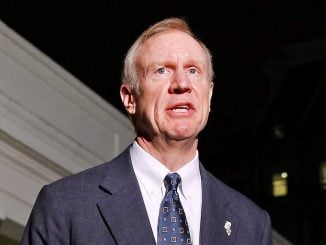RALEIGH — The U.S. economy still remains under threat from a spike in inflation, shortages of labor and supplies and the potential impact of the omicron variant of the coronavirus. But for now, Americans are spending freely, and the economy is forecast to expand at a 7% annual rate in the final three months of the year, a sharp rebound from the 2.1% pace in the previous quarter, when the delta variant hobbled growth.
Employers in some industries, such as restaurants, bars, and hotels, pulled back on hiring in November. By contrast, job growth remained solid in areas like transportation and warehousing, which are benefiting from the growth of online commerce.
The fall in the unemployment rate was particularly encouraging because it coincided with an influx of a half-million job-seekers into the labor force, most of whom quickly found work. Normally, many such people would take time to find jobs and would be counted as unemployed until they did. The influx of new job-seekers, if it continues, would help reduce the labor shortages that have bedeviled many employers since the economy began to recover from the pandemic.
“That’s good news for job seekers and workers, and for businesses too,” said Julia Pollak, chief economist at online jobs site ZipRecruiter. “It looks like the supply constraints are easing a bit with the unemployment rate low and wage growth high” — two factors that often encourage people to search for work.
This is very much in line with what North Carolina business analysts are finding at the state level as we approach the end of 2021 and look ahead into 2022.
North Carolina’s economy is projected to grow 3.2% and add a net gain of 126,800 new jobs next year, UNC Charlotte economics professor John Connaughton told state legislators at a COVID recovery hearing in November.
Connaughton is director of the N.C. Economic Forecast, which UNC Charlotte’s Belk College of Business produces quarterly. He has provided a further in-depth look ahead for North Carolina’s continued economic recovery in his fourth quarter analysis and forecast, released in December.
Among hopeful business growth and employment numbers, Connaughton’s report points to two major unknowns heading into 2022: inflation and the emerging omicron variant.
“We know that inflation has been here for the past six months,” said Connaughton. “The Fed has indicated it’s taking a different tack in 2022, but will that be enough to bring inflation down without creating a recession? That’s the big question for 2022. This is a very delicate balance.”
Connaughton’s projects North Carolina’s economic growth in 2022 will see 14 of the state’s 15 economic sectors experience output increases, with the hospitality and leisure services projected to see the strongest growth at 9.2%. He projects similar gains in transportation/warehousing, education and health services.
The jobs recovery continues to be unevenly distributed among the state’s economic sectors, Connaughton said.
“The real impact of the COVID recession has been on employment,” Connaughton said. “As of October 2021, the state’s level of establishment employment is still just over 70,000 lower than the February 2020 high-water mark of 4,626,600 jobs.”
The hospitality and leisure sector establishment employment level is 49,000 jobs lower than the February 2020 level, he said, accounting for two-thirds of the overall lower North Carolina jobs level that still exists through October.
According to the report, all 14 of the state’s nonagricultural economic sectors are expected to experience employment increases in 2022.
North Carolina employment is expected to reach 4,712,900 by December 2022, an increase of 2.7% over December 2021. The state is expected to add 124,400 net jobs next year.
The sectors expected to have the strongest employment increases in 2022 are Information (6.1%), Hospitality and Leisure Services (5.0%), and Construction (4.9%).
The North Carolina unemployment rate, which started 2021 at 5.9%, has fallen consistently to 3.9 % by November. The state’s unemployment rate is expected to hold steady through 2022 and end the year at 4.0%.
However, regarding the long-term presence of these positive trends, Connaughton acknowledges the unknown impact omicron will have on the state’s recovery, saying that it is “much too early” to predict the effect of future responses to the virus, as concerns over renewed public health restrictions grow once more.
The jobs outlook for the coming months has become hazier across the country with the emergence of the omicron variant. Little is definitively known about omicron, and widespread business shutdowns are considered unlikely. Still, omicron could discourage some Americans from traveling, shopping and eating out in the coming months and potentially slow the economy.
Will omicron cause outbreaks at factories and ports, disrupt operations and worsen supply chain bottlenecks that have forced up prices and contributed to the hottest U.S. inflation in decades?
Will it mean people will hunker down at home again and spend less on services — restaurant meals, concerts, hotel stays — which could weaken the economy but potentially defuse inflationary pressures?
Will return-to-office plans for white collar workers be put on hold indefinitely, deepening the hit to many cities’ downtown businesses?
Or will omicron prove a blip that scarcely slows what has become a surprisingly strong recovery from the short but intense pandemic recession?
Unable to assess its longer-term consequences, businesses, consumers and policymakers have struggled to respond to the omicron threat, which seems to be spooking markets and investors more significantly than the delta variant.
According to an index from North Carolina State University that tracks economic indicators to forecast the direction of the state’s economy between four and six months ahead, not much changed from September to October 2021, as the state came out of a spike in COVID cases over the summer attributed to the delta variant.
And while North Carolina’s prospects for a recovery year remain strong, analysts say consumers’ moods and market response remain a bit unpredictable.
“The Index is suggesting that the labor market in the state will continue to improve, with new jobs added and reductions in the jobless rate,” said Dr. Michael Walden, the William Neal Reynolds Distinguished Professor Emeritus at NC State University.
Walden added, however, that the emergence of the highly transmissible omicron variant adds uncertainty to the future economic conditions in the state.
“The virus still has a great deal to ‘say’ about the economy,” said Walden. “We’re still coping with this virus. It’s really running the economy and has been over the last two years. And it will continue to run it in 2022.”
The Associated Press contributed to this report.



